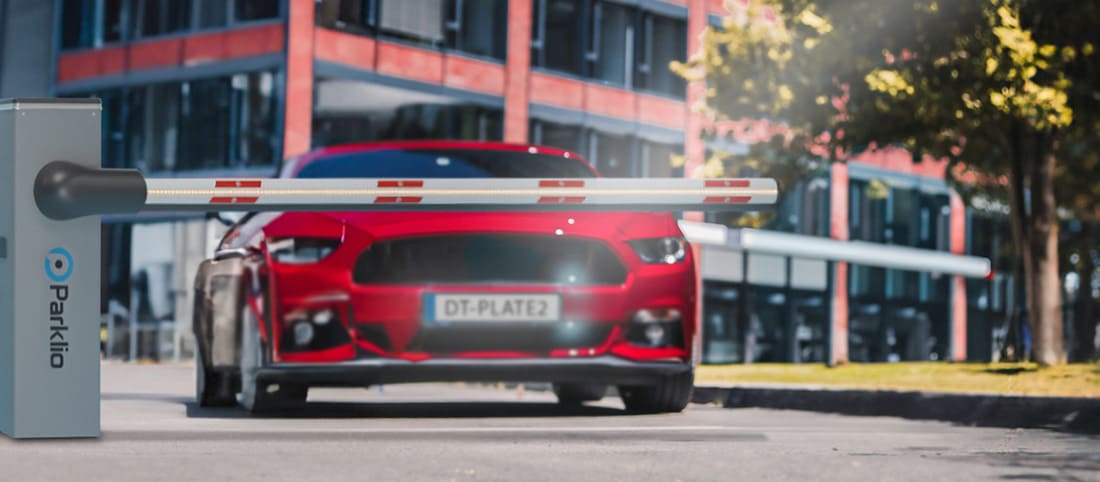How to Set Up Parking Zones

Have you ever considered the bond between setting up designated parking zones and achieving optimal efficiency in parking management? Going beyond the basics, the advantages range from delivering the expected standard of parking service to strategically allocating and maximizing the utility of parking spaces. This blog will walk you through the essential steps of setting up parking zones.
Table of contents:
What is a Parking Zone?
A parking zone refers to a designated area where vehicles are allowed to park, usually marked and regulated by the local government or parking owners. The characteristics and regulations of parking zones can vary widely depending on their location, purpose, and the needs of the area.
Strategy-based pricing in marked parking zones, such as hourly, daily, or monthly rates, can help parking lot owners get the most use out of their spaces. This flexibility enables them to swiftly adjust to shifting demand trends, effectively serving diverse customer segments. As a result, regulating parking zones increases both facility usage and revenue generation.
Planning Parking Zones
Establishing parking zones is crucial for efficient parking management, but it comes with challenges such as striking the right balance between short-term and long-term parking zones, ensuring accessibility for all types of vehicles, or ensuring optimal utilization of available space in densely populated areas. So, let’s take a look at the initial steps that need to be taken when planning parking zones.
Analyze the demand for parking
Initially, get to know the parking area’s surroundings. Analyze the population density and traffic patterns in the area, taking into account factors like the distance to residential neighborhoods, business complexes, and highly visited attractions. Additionally, investigate the frequency of use for nearby buildings, including residential, office, shopping, and other facilities, as the high usage may indicate a higher demand for parking.
Furthermore, identify the times of highest demand, such as during rush hours or weekends, because this information will be useful in preparing for peak capacity. Lastly, assess the occupancy rates of other parking facilities in the vicinity to gain insights into overall demand and the potential saturation of parking spaces.
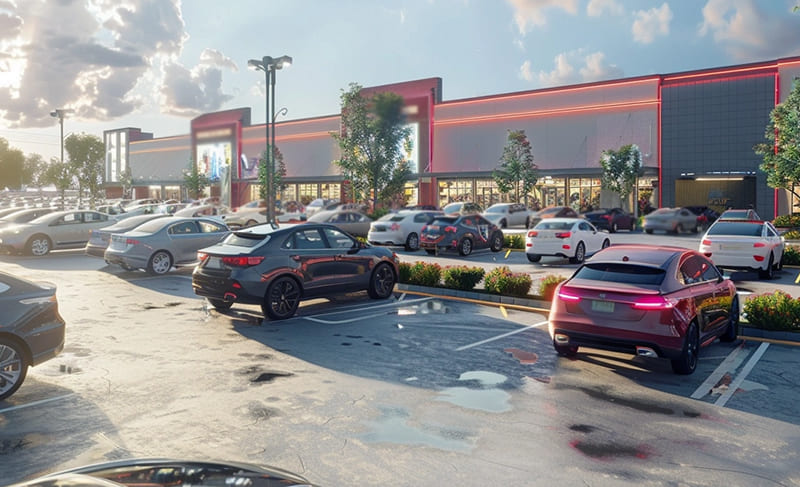
Assess parking needs
Assessing parking needs involves a comprehensive evaluation of the purpose of parking zones and the required capacity for each zone. By determining specific purposes such as visitor parking, employee parking, handicapped parking, or loading zones, you can tailor the allocation of spaces to meet diverse needs.
Understanding the demand for each zone is crucial for ensuring adequate parking availability. This assessment involves considering factors such as the number of employees and visitors, accessibility requirements, or the frequency of loading activities.
By carefully analyzing these aspects, you can effectively plan and allocate the appropriate number of parking spaces for each designated zone, optimizing the parking facility to accommodate specific user needs.
Design an optimal parking layout
Before setting up parking zones, plan the layout meticulously to ensure efficient traffic flow within the parking area. Designating specific entry and exit points will help you prevent congestion and streamline the movement of vehicles. By strategically positioning entry and exit points, you can establish clear traffic patterns, reducing the likelihood of bottlenecks and improving overall accessibility.
Mind local regulations
Before establishing parking zones, make sure to obtain the necessary permits and approvals. This involves checking local land use and zoning regulations to identify any restrictions or requirements governing the designated parking areas.
As different areas may have specific requirements for parking zones based on the type of property and its intended use, ensuring compliance with these regulations helps avoid issues and delays.
Setting up Parking Zones
Once the planning phase is complete, you can start designating parking zones. In the following section, we'll outline the stages involved in establishing parking zones.
Develop zoning strategy
When it comes to determining parking zones, the process involves dividing the parking area into distinct zones tailored to meet the specific needs of the users and the demands of the location.
Let's take a closer look at common types of parking zones and their typical features:
- Short-term parking zones are intended for brief stays, such as pick-ups and drop-offs, with time limits usually ranging from a few minutes to a couple of hours, often found near business complexes and public facilities such as hospitals or schools.
- Long-term parking zones are designed for extended stays or overnight parking needs and are typically found in residential areas, employee parking lots, and near transit stations.
- Metered parking zones, typically found in busy districts and city centers where they regulate parking duration and availability, are equipped with parking meters or pay-and-display machines where drivers must pay for the time they park.
- Permit parking zones are reserved for vehicles with permits issued by local authorities or parking owners. Permit parking is commonly used in residential areas, business districts, or campuses to ensure parking availability for those who have obtained permits.
- Loading zones are set aside for the loading and unloading of goods or passengers, with strict time limits to facilitate quick turnover. They are usually found near transportation hubs, health institutions, and industrial areas.
- Accessible parking zones are reserved for vehicles with valid disability parking permits, located near entrances to buildings to provide convenient access for people with disabilities.
- Reserved parking zones are allocated for specific users or purposes, such as residential, employee, or VIP parking.
Before you create the zoning categories, consider the findings from the assessment of parking needs and the specific requirements of different user groups. For instance, employees might require long-term parking, while visitors might need short-term parking. Residents may require reserved parking areas, and there might be a need for accessible parking spaces for individuals with disabilities.
Also, the traffic flow analysis will help you determine the most suitable locations for different types of parking zones. For example, areas with high turnover might be designated for short-term parking, while the periphery of the parking lot could be designated for long-term parking to minimize congestion.
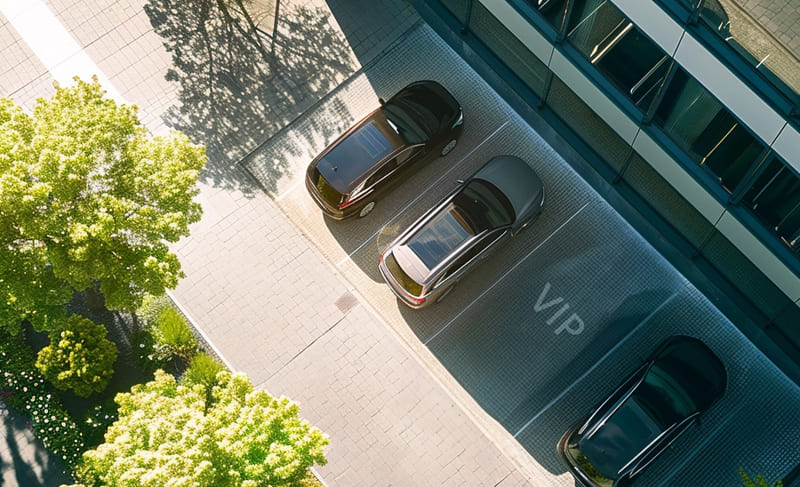
Employ signage and markings
Strategically place clear and easily understandable signage at entry points, intersections, and key decision points within the parking facility to prominently display the type of parking allowed in each area.
In addition to signage, pavement markings such as painted lines, symbols, and directional arrows on the pavement help visually define parking areas and guide users on how to navigate through the parking area safely.
Leverage Smart Parking technology
Smart parking solutions can significantly help you with setting up parking zones and optimizing the usage of parking spaces. By utilizing technologies such as cameras and data analytics, smart parking systems can efficiently monitor and manage parking spaces in real time.
Additionally, these solutions can help in identifying available parking spots, guiding drivers to vacant spaces, and enabling better traffic flow within parking zones. Moreover, the data collected from smart parking systems can provide valuable insights into parking patterns and usage, allowing you to make informed decisions regarding the allocation and optimization of parking spaces.
The key advantages of utilizing smart parking barriers in the establishment of parking zones include efficient space management, data-driven decision-making, and improved user experience.
Smart parking barriers, especially gate barriers, effectively manage entry and exit to streamline traffic and prevent unauthorized access. Additionally, Parking Space Detection Systems use cameras to monitor parking space occupancy, identify vacant spots, and guide drivers to available spaces through real-time data shown on displays. Finally, the Parking Management System further refines operational efficiency by automating traffic control, providing data on parked vehicles, and allowing for dynamic rate structures based on demand and customizable plans tailored to specific needs through analytical tools.
Smart parking solutions can empower parking owners with data-driven decision-making, utilizing spot occupancy statistics, traffic trends, and user behaviors to devise well-informed management strategies that cater to peak usage times. Moreover, these solutions improve the user experience by providing immediate information on parking availability, which minimizes the time spent searching for a spot. The parking experience is further enhanced by cashless and automated payment processes, mobile app integration with navigation assistance, and the frictionless operation of Automated Number Plate Recognition (ANPR) systems, ensuring a convenient and secure parking experience for drivers.
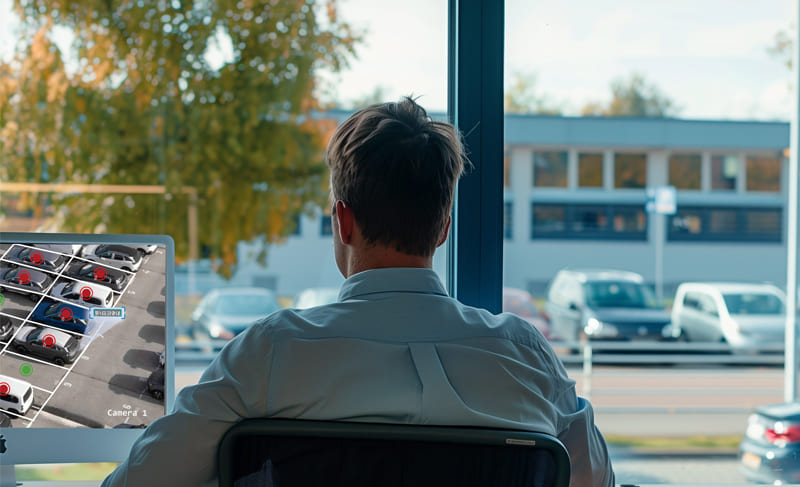
Monetize your parking assets
Implementing parking policies, such as paid options, permit parking, or time-limited parking, can help you ensure efficient use of parking spaces.
For a parking facility owner, establishing a paid parking system is a means to manage demand and generate revenue. Traditional parking meters serve individual spaces and operate on cash. While they are straightforward, newer smart parking meters offer advanced payment options such as credit card and phone payments, reducing the hassle for users and increasing compliance. For a more scalable solution, Pay and Display systems cater to multiple spaces and require users to display their parking ticket on the dashboard. This method ensures fair use, prevents the transfer of unused time, and allows for variable time purchases, giving customers flexibility and improving space turnover.
By limiting the amount of time a car can occupy a parking spot, time-limited parking helps make the most efficient use of available parking spots. In many cases, drivers may be obliged to pay for parking during peak hours while receiving free parking outside of these times. This approach not only increases turnover but also helps to maintain a consistent flow of customers throughout the day. The rules for time-restricted parking are usually clearly specified on signs at the parking lot, detailing the authorized duration and enforcement hours.
A parking permit is an authorization that allows a driver to park in a designated area, and it can come in various forms, such as a sticker, hangtag, RFID card, or a virtual permit linked to a database record. Specifically, Permitless Parking utilizes license plate recognition technology (ANPR) to identify pre-registered vehicles, treating their license plates as virtual permits. Implementing a permit parking policy is an effective way to reserve parking spaces for specific groups, such as residents or employees, ensuring that they always have access to available spots.
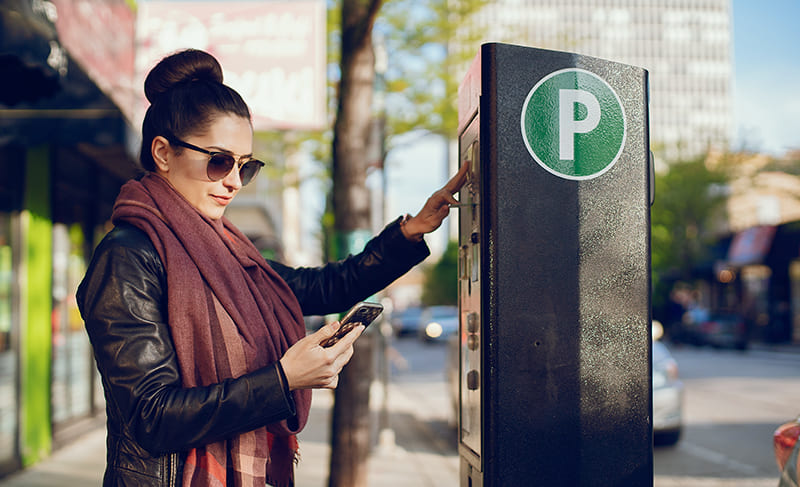
The demand for efficient parking zones will intensify
As urban areas continue to grow and evolve, parking is becoming an increasingly precious resource in urban areas, so it is crucial for parking owners to stay adaptable and embrace emerging technologies.
The integration of advanced technologies like IoT, data analytics, and automation is set to transform parking management, leading to enhanced efficiency and customer satisfaction. By investing in smart parking solutions, you can streamline operations, elevate the user experience, and maximize space utilization, creating a more seamless and responsive parking environment.

